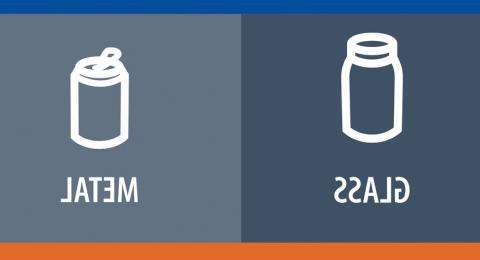Waste
最大限度地减少校园社区产生的潜在废物量并将其送往垃圾填埋场是一项巨大的挑战,也是联合国大学可持续发展努力的一个组成部分. 这不仅从环境的角度来看很重要, but also from a standpoint of public health, justice and equity and sound financial management. 虽然整个校园的部门和倡导者已经工作了几十年,使联合国大学更接近“零浪费”的地方, we know we still have much to do. 正因如此,为整个校园制定零废物计划,是理大“建设财政实力”战略重点之一 Future of UNH!
解决浪费的最好办法就是一开始就不要制造浪费. 这就是为什么整个校园的部门和组织都在努力寻找减少浪费的方法. 了解更多他们这样做的方法,以及你如何成为解决方案的一部分!
Started by students, 联合国卫生组织的“垃圾宝藏”是一个标志性的项目,帮助人们远离垃圾填埋场.

STARS EVALUATION
WASTE (3.9/10)
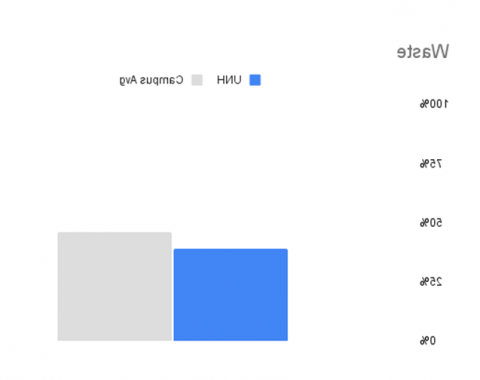
UNH earned 39% of total points available (3.9/10) compared to an AASHE member average of 54.12%.
STARS 旨在表彰那些正在通过减少浪费来实现零浪费的机构, reusing, recycling, and composting.”
UNH Dining
Their "Take Less, Waste Less" campaign is aimed at reducing food waste; they’ve gone “strawless” and "trayless," and there are great reusable containers 从餐厅和乳品吧拿食物, 还有使用这些和/或自带杯子的折扣.
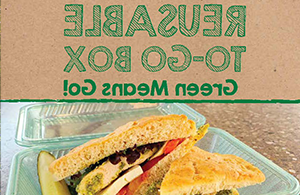
Trash 2 Treasure
T2T is a student-run leadership program that 在每学年结束时,从学生那里收集大量的家具和宿舍用品,并在第二年秋天的校园庭院大甩卖中以折扣价回收或转售. Since its inception, T2T为学生们节省了50多万美元的返校费用,并避免了近200吨垃圾进入垃圾填埋场.
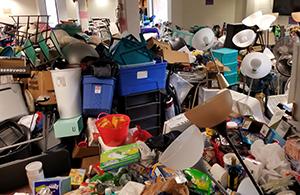
Food Repurposing Project
UNH is working with Gather是一个致力于消除饥饿的当地社区组织 a cool new partnership 重新利用从UNH食堂生产的多余食物. 他的合作从UNH食堂获得了额外的食物, Gather, 当地农民和其他食物,否则会被浪费掉, 并将其转化为有营养的食物,提供给社区中需要食物的人.
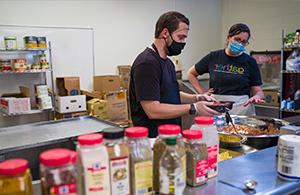
Donations & Surplus
联合国儿童基金会捐赠了大量的二手床垫和其他家具给慈善组织,比如 IRN Surplus – The Reuse Network each year. 它也有盈余政策,需要使用 items that are still good (i.e. furniture, vehicles, electronics, 等)需要在处理之前提供给社区成员.

Waste “Diversion” Through Recycling and Composting
UNH在回收和堆肥方面有着悠久的历史. 我们回收迁入和迁出的大块纸板、废金属和厨房里的废油脂. 2013年,该大学转向了“单一流”系统, 标准化垃圾箱和标识以教育校园社区的努力一直在进行中.
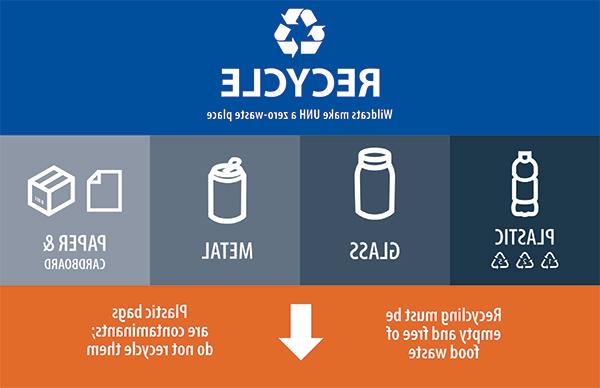
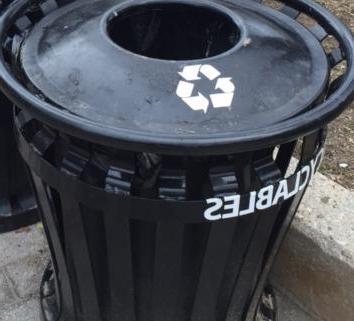
Recycling at UNH
Plastics #1, #2 and #5, glass, aluminum and tin cans, 纸板和纸张是唯一应该进入校园内的联合国大学回收箱的物品.
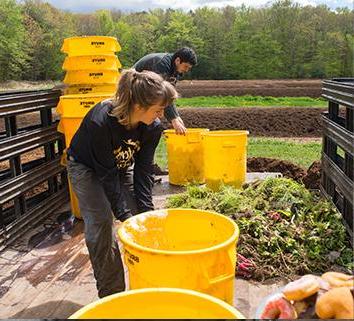
Composting at UNH
UNH的长期堆肥计划将校园食物垃圾送到金曼农场进行堆肥. We also work with Agricycle 将校园餐厅和野猫体育场的食物垃圾转化为可再生能源.
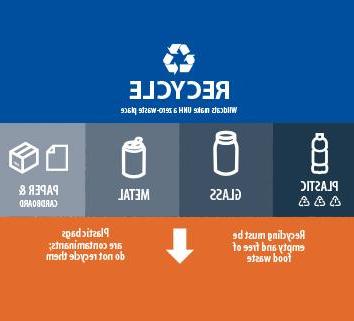
Eliminating Contamination
联合国卫生部门教育社区保存塑料袋, food, liquids and non-recyclables OUT of recycling bins and dumpsters; and to put only food waste, paper products, 或将餐厅的可堆肥餐具放入堆肥箱.
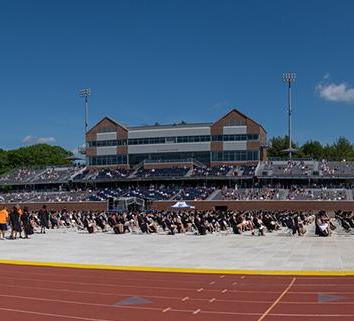
Zero Waste Stadium & Events
UNH has worked to ensure that everything served in WildCAT Stadium 可以堆肥或回收利用,并使大学日和其他校园活动零浪费.
More on Composting at UNH
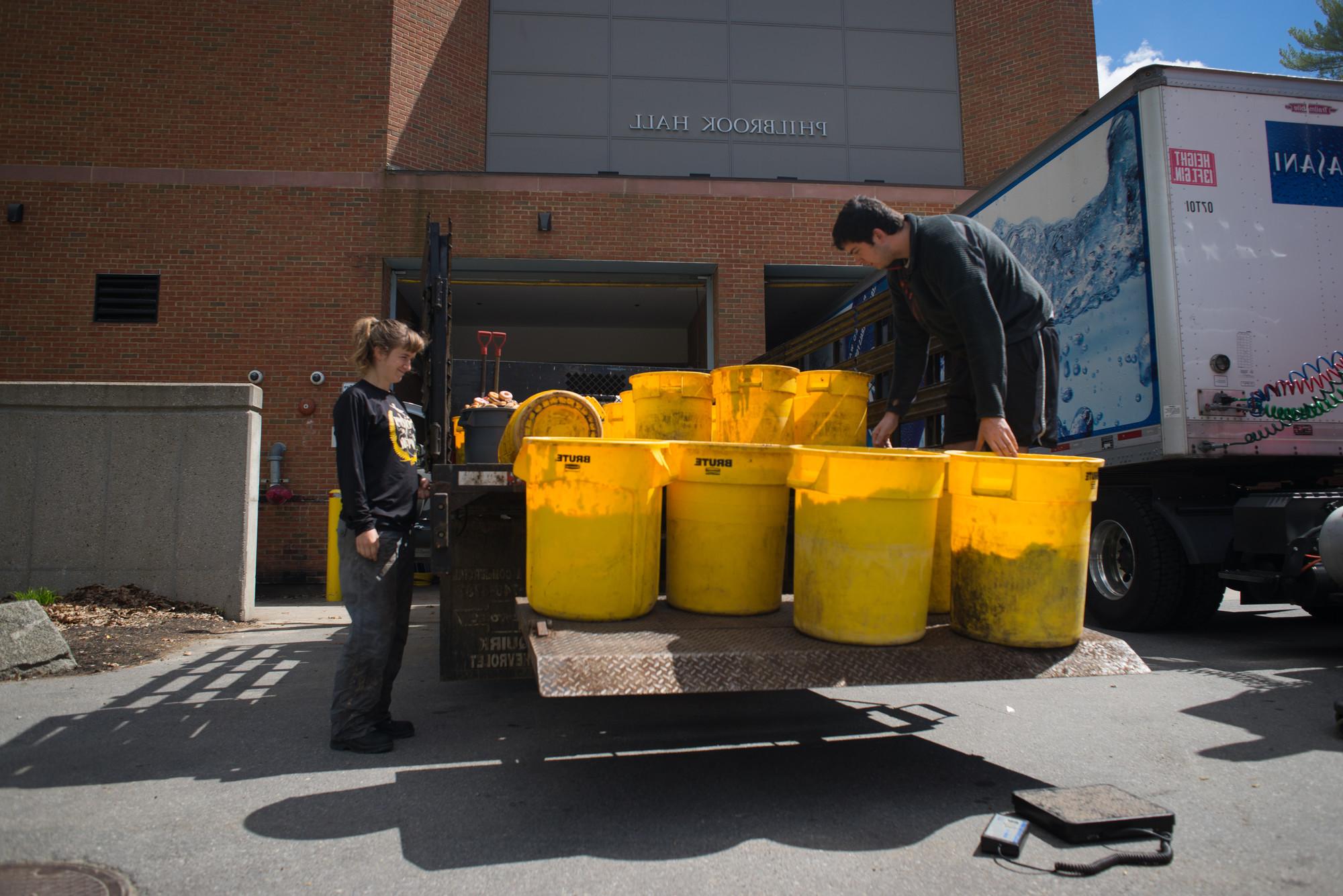
在学年期间,UNH食堂每周提供近7万顿饭. UNH以提供当代食品服务为自豪,为食客提供广泛的选择和口味. 在用餐结束时被丢弃的食物(消费后的废物),加上在准备饭菜(消费前的废物)中产生的有机废物,导致了大量的食物浪费.
To deal with this in a sustainable manner, 这些废物和其他有机材料是从校园内外收集的.
- 餐厅的工作人员把一桶桶的垃圾装上堆肥车,运到外面去 Kingman Farm to the windrows (由在港大收集的粪便、锯末、植物物料及有机废物组成的长堆).
- 更轻、更粗糙的windows是较新的,还没有被黑掉, crumbly and more uniform compost.
- 用拖拉机在窗户上挖一个洞,把废物倒进去,然后盖上.
- Once the waste is poured out and covered, 废物桶被清洗后放回原处.
- 这些食物垃圾被分解成营养丰富的堆肥,并被应用到金曼农场的田地里.
- Food waste from all UNH dining halls (Stillings, Philbrook, Holloway), 以及UNH纪念联盟大楼(MUB)和一些宿舍/公寓, is brought to Kingman Farm.
- 在学年期间,每个月大约收集25,000到40,000磅的食物垃圾. More than 200,000 pounds per year are composted.
- 自2006年夏天以来,UNH餐厅的工作人员一直在收集食物垃圾,并将其带到金曼农场. 在此之前,可持续发展研究所的堆肥实习生收集食物垃圾. 五名实习生在学年期间被聘用,两名实习生在暑期被聘用.
